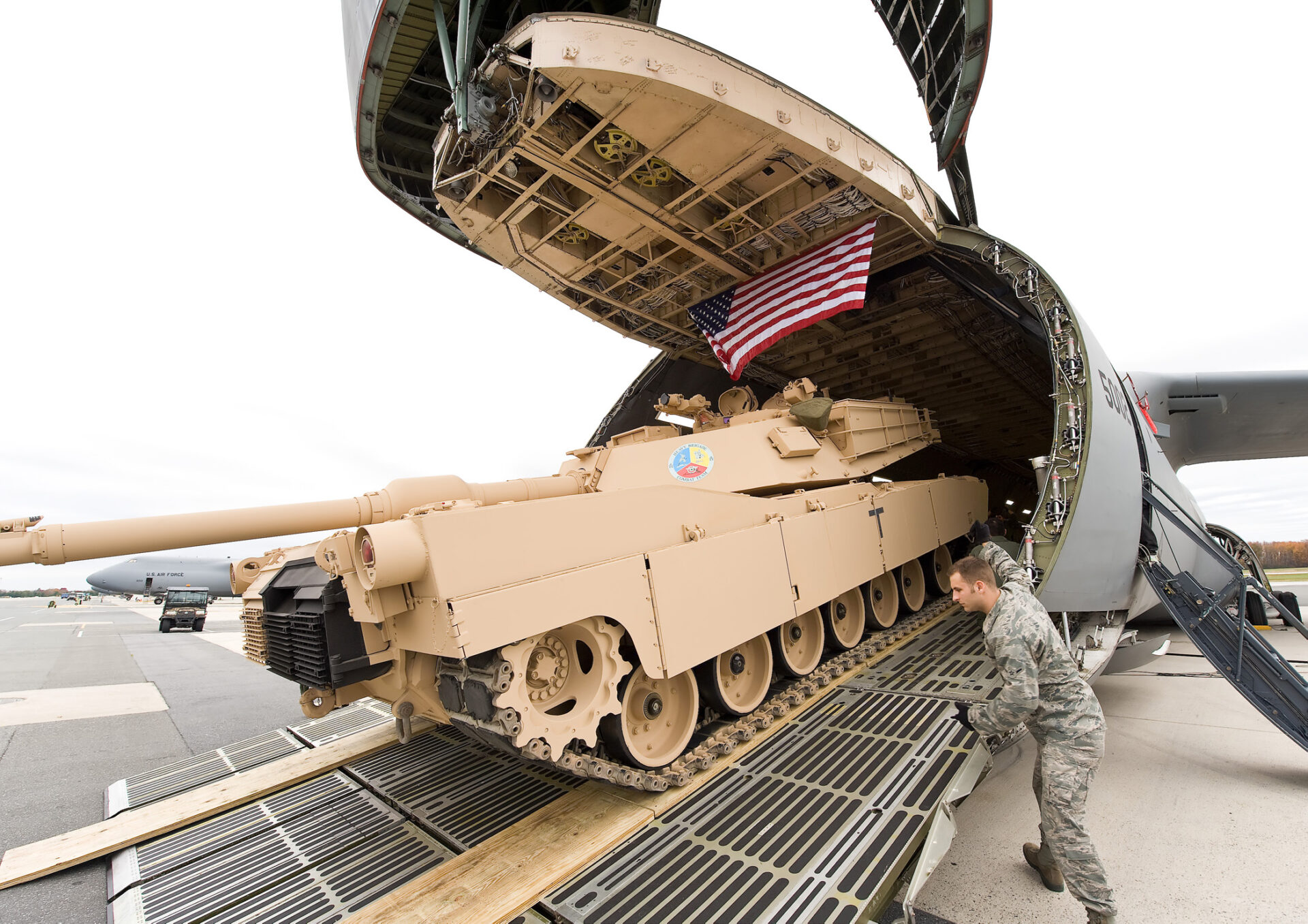Poland is emerging as a military force in Europe

The government in Warsaw is steadily increasing military spending and developing Poland’s military potential at a rapid pace, becoming the undisputed leader not only of the Visegrad Group, but of the entire Intermarium region. Polish politicians make no secret of the fact that, in the face of Russia’s aggressive actions, they intend to make Poland the most powerful military force on the Old Continent as soon as possible.
Jacek Przybylski
After the Russian aggression against Ukraine, the government in Warsaw sharply increased defense spending. In 2020, the Defense Ministry’s budget was PLN 49 billion, or a little over 2.2% of GDP. In 2023, that budget doubled to more than PLN 97 billion. And that’s not all. After all, armaments spending is also financed, for example, from the Armed Forces Support Fund. Its exact value is not officially stated, but it is estimated at several tens of billions of PLN this year.
In NATO’s top-ranking positions
In total, Poland will thus spend 130-150 billion zlotys on strengthening its defense this year alone, which means that it will spend at least 3% of GDP on the military this year, and possibly even 4% of GDP. This is the most ambitious plan among all NATO members, and a continuation of the surge in defense spending (the government in Warsaw allocated 2.42 % of GDP last year, and 2.22 % the year before).
By comparison, in 2022 only 7 out of the 30 member countries reached the alliance’s recommended level of 2% of GDP spent on defense. The United States – the world’s largest military power and the most powerful NATO country – spent 3.46% of GDP on defense last year. Greece (3.54% of GDP), Lithuania (2.47%), Estonia (2.12%), the United Kingdom (2.12%), and Latvia (2.07%) were also among the countries that invested heavily in armaments.
Nominally, the United States still spends by far the most on armaments (over $820 billion in 2022), while all other NATO allies collectively spend less than half that amount on defense. In Europe, the UK government nominally spent the most on defense in 2022 ($67.7 billion), followed by Germany ($61 billion), France ($52.4 billion), Italy ($30.4 billion), and Poland ($17.1 billion). Just behind Poland, meanwhile, are Spain and the Netherlands.
In 2023, nominally, Poland should be spending amounts already comparable to Italy or Canada. This is because the government in Warsaw makes no secret of the fact that its goal is to build the most powerful land army in Europe, which will be able to deter any potential aggressor and ensure that every patch of Polish territory can be defended against occupation. The government in Warsaw is therefore spending a lot of money on, among other things, the purchase of state-of-the-art military equipment from both Polish armament plants and the world’s largest suppliers.
Already at the end of last year, 10 South Korean K2 Black Panther tanks armed with an automatically loaded 120mm smoothbore cannon arrived in Poland (by 2025 Poland is bound to have as many as 180 of them, and after 2025 their modernized K2PL version is to be assembled in Poland), as well as 24 units of K9A1 self-propelled cannon howitzers (out of 212 ordered by the government in Warsaw), and South Korean K239 CHUNMOO multi-mission rocket launchers (K-MRLS) (In 2023, the Polish Missile and Artillery Forces are to be equipped with the entire first squadron of 18 launchers, built on Polish Jelcz trucks, and by 2027 Poland is to receive as many as 218 launchers in total, along with an adequate stockpile of several thousand missiles and rockets, including guided missiles with a range of up to 80 km and high-precision ballistic missiles with a range of about 290 km, designed to hit, for example, ammunition depots, command posts, communication hubs, airfields, helicopter landing sites or enemy missile launchers).

In March 2023, meanwhile, another shipment of armaments from South Korea with five K2 tanks and 12 K9A1 Thunder cannon howitzers arrived at the port in Gdynia. Later this year, the Polish armed forces should have a total of 15 K2 tanks and 48 K9 howitzers, as well as the first batch of FA-50 aircraft with the red-and-white checkerboard (in 2022, Poland signed a contract to buy a total of 48 modern South Korean light combat fighters for $3 billion, the first twelve of which are to be deployed at a base in Minsk Mazowiecki as early as Q3 of this year, with the remaining FA-50 PL variant to arrive over the Vistula in 2025-2028). These will be Poland’s first combat aircraft with a false cockpit on the underside of the fuselage, designed to confuse enemy pilots during a mid-air clash (this solution is used, for example, by the US and Spanish armies).
The FA-50 light fighter, which can serve as a training or support aircraft – has a range of 1,800 kilometers, accelerates to Mach 1.5 and can climb to an altitude of 14.5 kilometers. The primary armament of these light multi-role combat aircraft is a 20mm cannon. The machine can also hook up nearly 4 tons of various types of missiles (e.g. Hydra), air-to-air missiles (e.g. thermally guided AIM-9 Sidewinder with a range of up to 35 km), and air-to-ground missiles (e.g. AGM-65 Maverick guided missiles for close air support missions). Importantly, the armament of the FA-50 is compatible with that of F-16 fighters, while pilots familiar with the operation of the Korean machines need only nine hours of training to be able to sit at the controls of the F-16.
The 36 machines in the FA-50 PL variant are to be more heavily armed, but also capable of mid-air refueling and equipped with AESA radar.
Also delivered to Poland in early 2023 were state-of-the-art MQ-9A Reaper-class Medium Altitude Long Endurance drones, leased from the U.S. as part of an urgent operational need, which can remain in the air for more than 24 hours, collecting intelligence, conducting reconnaissance or carrying cargo. Poland has also purchased Turkish Bayraktar TB2 medium-altitude tactical drones, proven in the Russian-Ukrainian war, which are capable of staying in the air for 27 hours and reaching a maximum speed of 220 km/h. The TB2 version drones are designed for both reconnaissance and combat missions (they can be equipped not only with guided missiles, but also with laser-guided glide missiles).
Polish military pilots are also awaiting delivery of the first units of the 32 U.S. F-35A fighter jets (ordered on January 31st, 2020 at a cost of $4.6 billion, along with a training and logistics package). The first eight F-35A Lightning IIs are expected to arrive next year. Initially, however, they are to be used mainly for training. The first squadron of these state-of-the-art fighters is to go to the 32nd Tactical Aviation Base in Łask, and the second to the 21st Tactical Aviation Base in Świdwin.
Abrams and HIMARS
Polish artillerymen are already using Krab howitzers (with a range of about 40 km) and WR-40 Langusta self-propelled rocket launchers, each with 40 barrels of 122.4 mm caliber (a full salvo is performed in just 20 seconds, and the range of shells – depending on the type of ammunition used – is from 20 to about 40 km), as well as older RM-70 and BM-21 Grad launchers. Already this year, Polish soldiers are also expected to have at their disposal an entire squadron of American HIMARS (in 2019, Poland purchased 20 launchers from the US that are to be delivered this summer).
In addition, in February 2023, the US State Department approved the sale of up to $10 billion worth of 484 HIMARS launchers to Poland (18 of which are in the U.S. configuration), as well as 478 launcher reloading kits, 45 ATACMS missiles with a range of 300 km, 461 GMLRS-AW precision missile kits, 521 GMRLS-U kits with fragmentation and demolition warheads, and 532 GMLRS missile kits with an extended range of up to 150 km).
In April 2022, a Polish-American contract worth $4.75 billion was concluded for the delivery of 250 Abrams tanks in the state-of-the-art M1A2 SEPv3 version (to be delivered to Poland as early as 2024, along with associated equipment, i.e. 26 technical protection vehicles, 17 M1074 Joint Assault Bridges and a stockpile of ammunition). Authorities in Washington, in December 2022, also approved the sale of an additional 116 Abrams tanks to the Polish government, which are considered the safest manned, series-produced tank in the world. In turn, a Polish-American contract worth $3.75 billion for 116 M1A1 Abrams tanks, along with 12 M88A2 HERCULES technical protection vehicles, eight M1074 Joint Assault Bridge tanks, six M577 command vehicles, 26 HMMWVs (Humvees) and 26 JLTV light armored vehicles, was already concluded in January 2023. Under the contract, the Americans will also supply Poland with tens of thousands of tank ammunition. As announced by the Ministry of Defense, the first units of the M1A1 Abrams are expected to arrive to Poland as early as May/June 2023. This is to allow Poland to rebuild the potential of Polish armored brigades after the transfer of Polish tanks to Ukraine, which is fighting with Russia. Already in 2022 – under a separate agreement – the United States transported 28 M1A2 SEPv2 Abrams tanks to Poland, along with instructors who are already training Polish crews at the Abrams Academy, which was established at the Land Forces Training Center in Poznań. In total, the Polish Army may have more than 700 launchers (HIMARS plus a similar class of launchers from South Korea), which is more than currently available to commanders in the United States. When asked about this in the media, the head of the Ministry of Defense stressed that, “the plan is for the Polish Army to be very strong, for the Polish land army to be the strongest in Europe.”

New vehicles for the infantry
In February 2023, Deputy Prime Minister and Minister of National Defense Mariusz Blaszczak approved a framework agreement for the supply of new vehicles for the Polish Army. As a result, the Borsuk infantry fighting vehicle, characterized by high mobility, excellent mine protection and good armor, entered series production. A total of 1,400 modern BWP Borsuk vehicles will be produced by a consortium of the Polish Armed Group and Huta Stalowa Wola, and delivery of the first vehicles is expected to begin in late 2024 and early 2025. The Technical Modernization Board also approved this year a design for a heavier vehicle than the BWP Borsuk, which is to be based on the Korean K9PL/PK chassis used, for example, in the Krab cannon howitzer and the ZSSW-30 unmanned fighting turret used in the Borsuk.
To build anti-missile and anti-aircraft defense capabilities, the Polish authorities this year ordered, among other things, more than 20 ZDPSR Bystra mobile anti-aircraft radars with a range of 80 km, which work with Pilica+ short- and ultra-short-range anti-aircraft missile-artillery sets. The system designed in this way will be tasked with, among other things, protecting Patriot launchers, which are also already on the equipment of the Polish army and constitute the “higher layer” of Poland’s anti-aircraft defense.
In turn, under the MIECZNIK program, the Polish Navy will acquire three Type 31 missile frigates by 2034. The Arrowhead 140 ships will be produced by the British company Babcock International. The first of these is to be handed over to Polish sailors in 2028, and others in 2033 and 2034. Swedish Saab, in turn, is building two radio-electronic reconnaissance (SIGINT) ships for Poland under the DELFIN program. The vessels, commonly referred to as “spy ships,” are expected to enter service under the Polish flag as early as 2027.
Target: 300,000 troops
One of the priorities of the Polish Ministry of Defense is also, as can be read on the defense ministry’s website, “to increase the size of the Polish Army in all types of armed forces (land forces, special forces, aviation, navy, territorial defense), in professional service and in reserve, and in all personnel corps – privates, non-commissioned officers and officers.” As of this year, 164,000 people are already serving in the Polish Army (including more than 115,000 professional soldiers, 35,000 soldiers of the Territorial Defense Forces, 8,000 candidates for professional soldiers, 3,600 soldiers of preparatory service, i.e. voluntary basic military service, and 1,000 soldiers of the National Reserve Forces). In 2022, as many as 13,742 professional soldiers joined the Polish Army, the highest number since the abolition of compulsory military service in Poland.
By comparison, Germany, which has twice the population of Poland, has an army of 183,000 soldiers, and France, with a population of 68 million, has about 200,000 soldiers at its disposal. According to Deputy Prime Minister and Defense Minister Mariusz Blaszczak, the goal is to create an army of as many as 300,000 soldiers by 2035, the core of which – about 250,000 men – will be professional soldiers. According to the Defense Ministry’s plans, the number of rocket artillery squadrons alone is to increase several times, and eventually there will be 28 of them.
The world sees Poland’s strength
In 2023, when Russia threatened the West with nuclear annihilation and began the largest military conscription in seven years, more and more journalists from Britain, France, the Netherlands, etc. recognized that Poland was not at all oversensitive about Russia, but rightly warned its allies for years about the military threat from the East.
“Poland is now on the front line: weapons, refugees, humanitarian aid,” the Dutch daily NRC noted in early April, stressing that Poland has become not only a logistical power, but also a “military and political” power. In February, meanwhile, the British daily The Times wrote that, “while the Franco-German axis looks rather tired, NATO is making an increasingly clear turn toward its eastern flank, where Poland is emerging as Europe’s military leader.”
The fact that Poland’s military is rapidly growing in strength was also noted late last year by the Spanish daily La Razon and the French Le Figaro. The Spanish authors praised not only the increasingly large and better-armed Polish professional army, but also the development of the structures of the Territorial Defense Forces and the “pioneering in the EU” action “Trenuj z wojskom” (Train with the Army, which is designed to train the Polish public in the use of weapons and in hand-to-hand combat).
In turn, the author of the text in the French daily Le Figaro stressed that Poland aspires to become “the leader of NATO’s eastern flank.” “Poland has decided to build the largest army in Europe. Warsaw is entering into massive arms contracts with the United States and South Korea, securing its position as a hegemon on the Old Continent, at least as far as land forces are concerned,” the Czech daily Konzervativní noviny noted. The Dutch daily Financieele Dagblad, meanwhile, published a text in December 2022 under the title “Europe’s new military superpower: Poland,” whose authors noted that Poland already has more tanks and howitzers than Germany, and stressed that although most of the Old Continent is not aware of it, today “Poland probably has the best army in Europe.”




